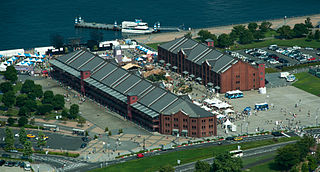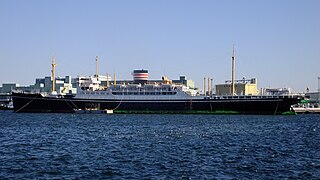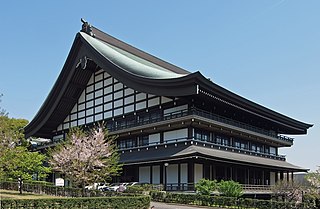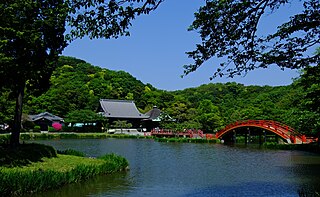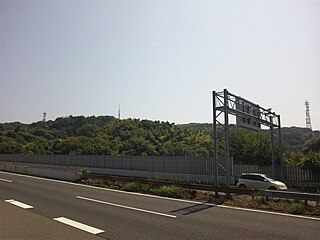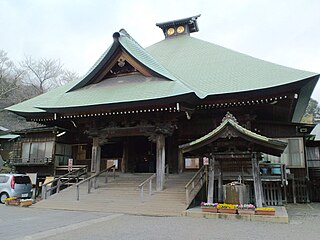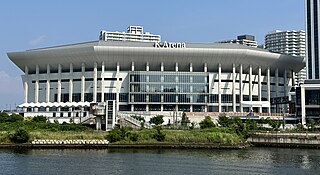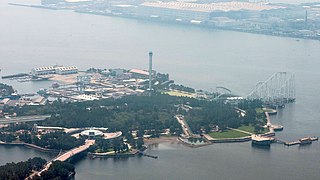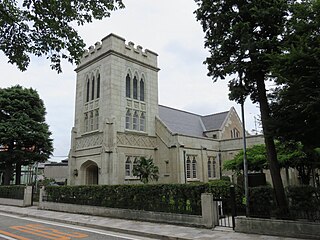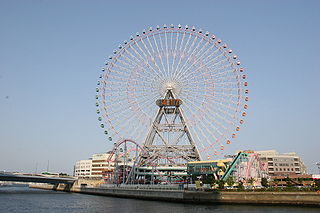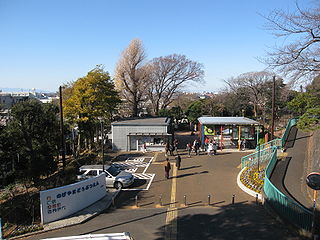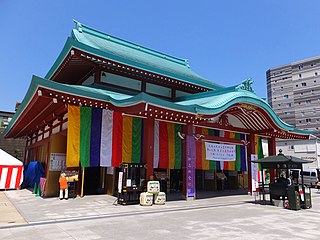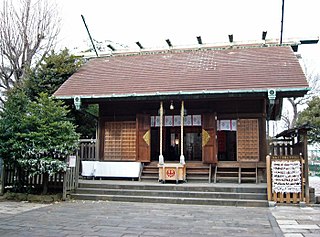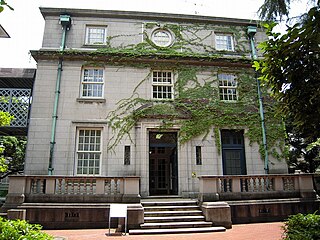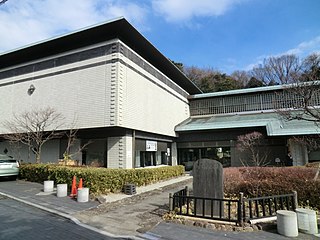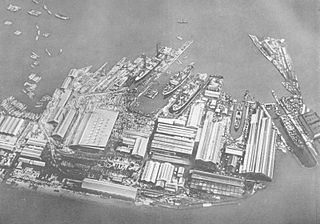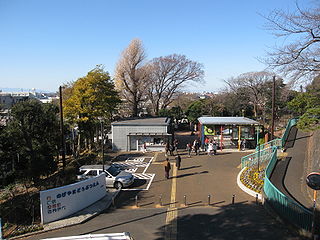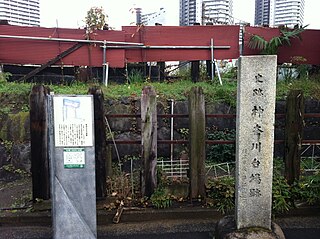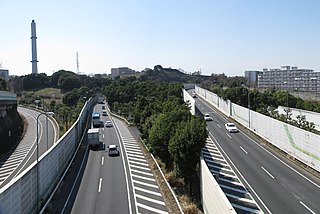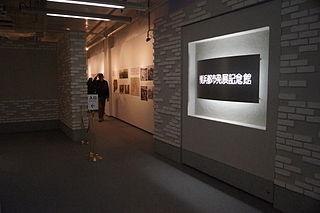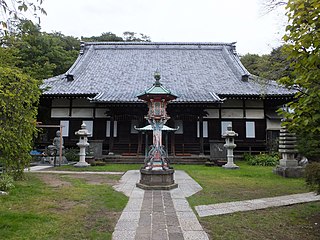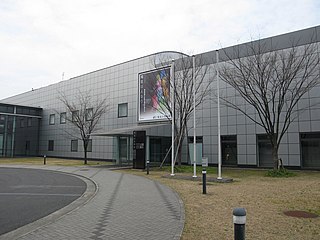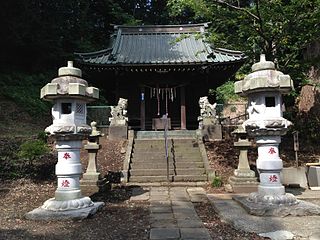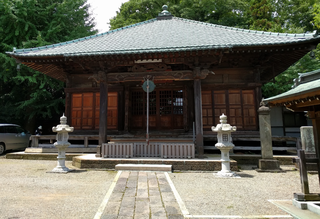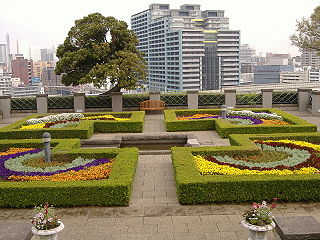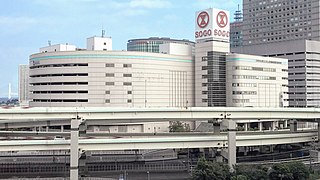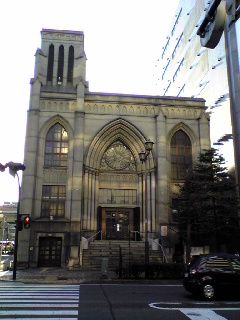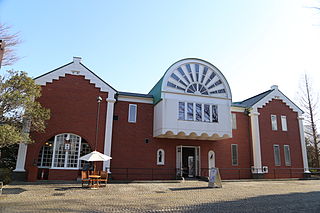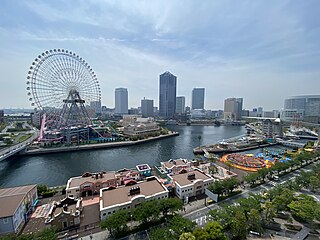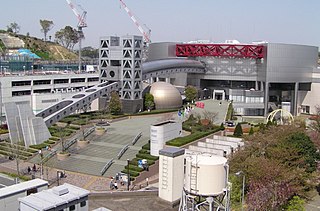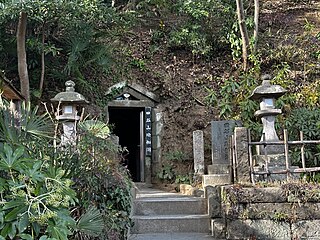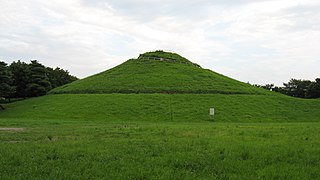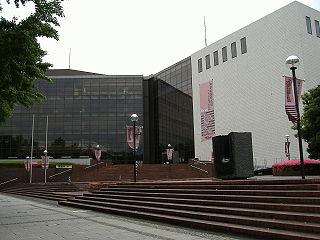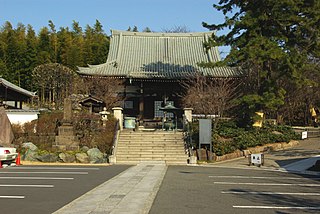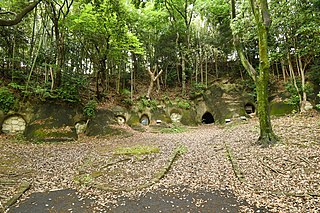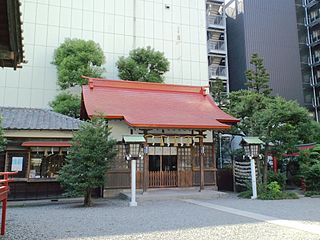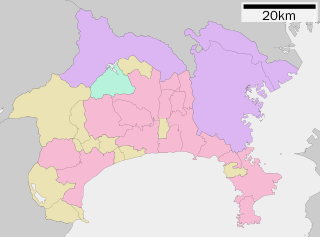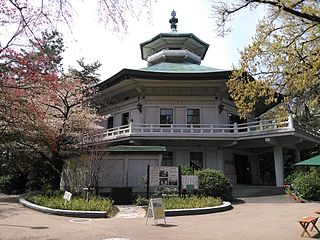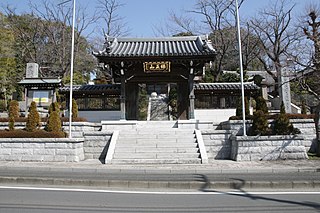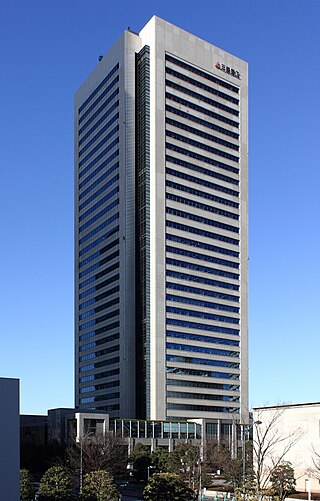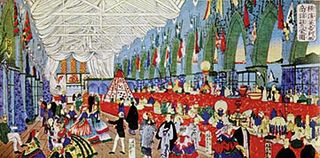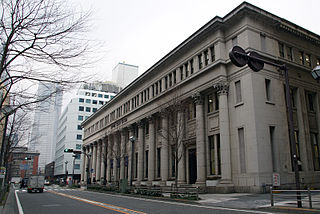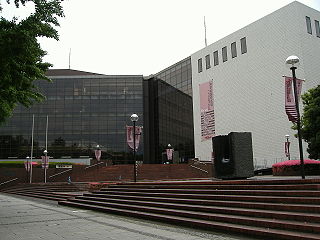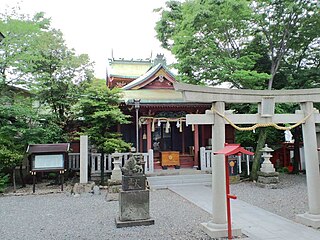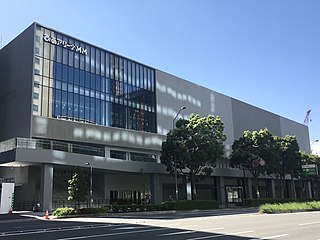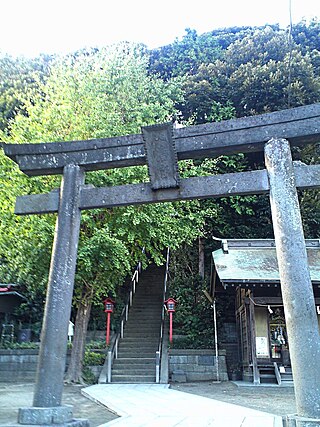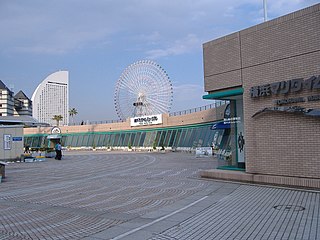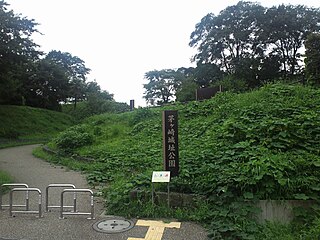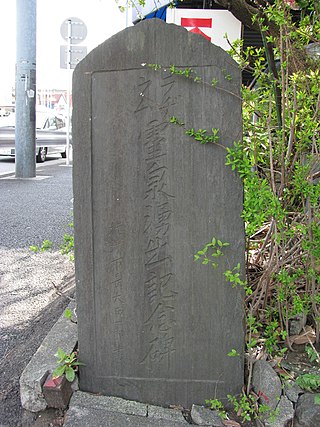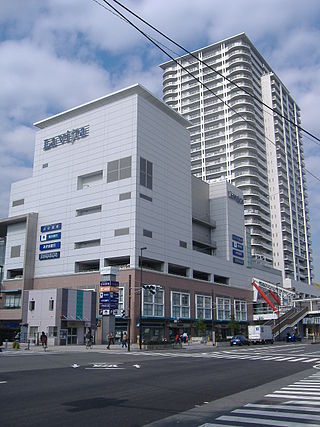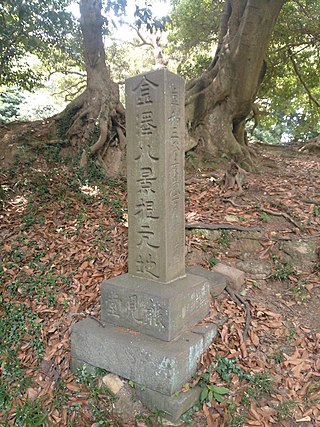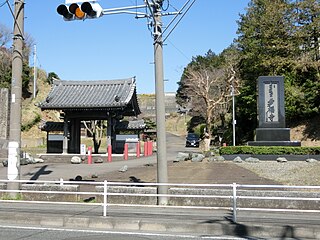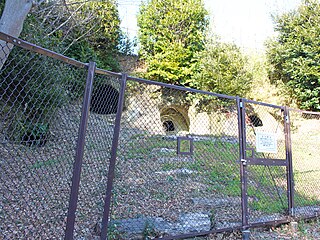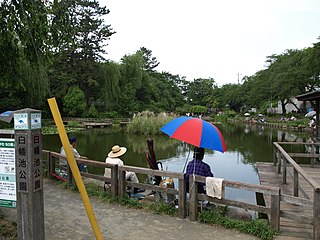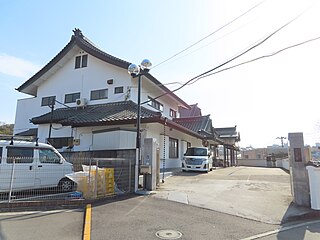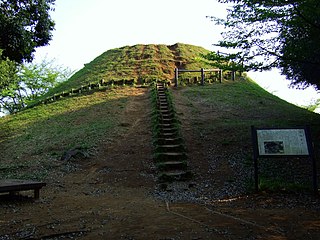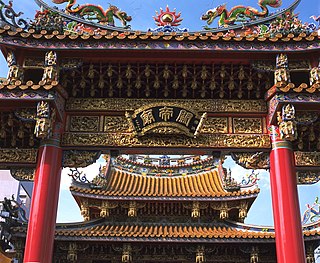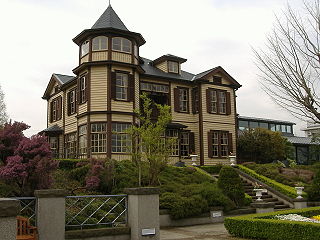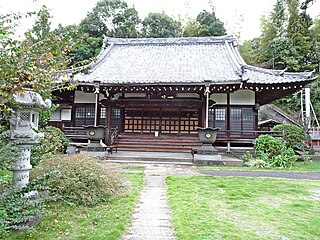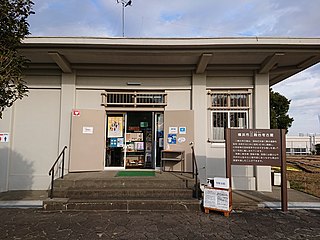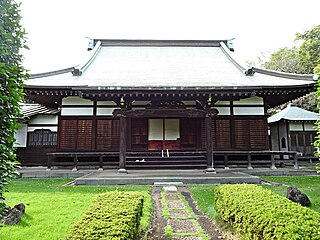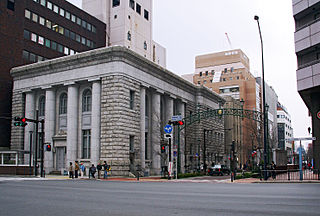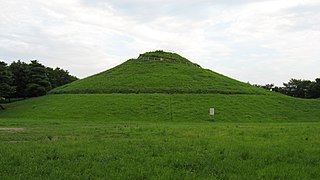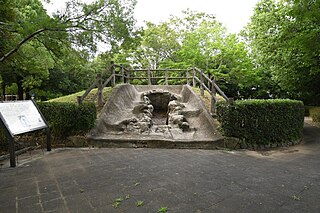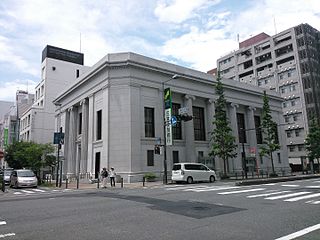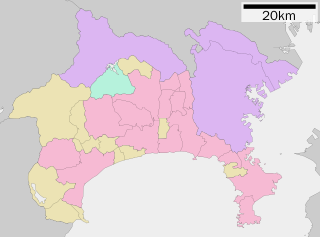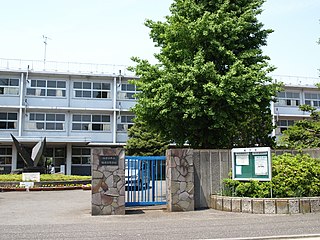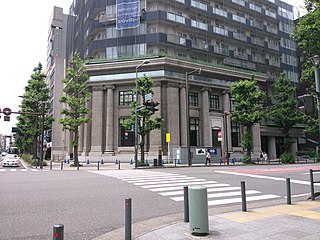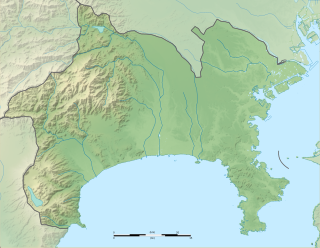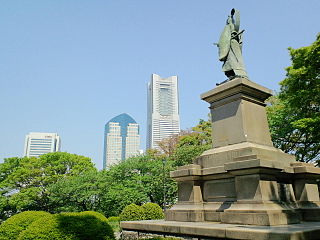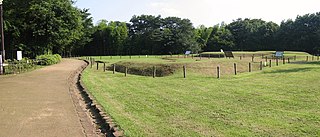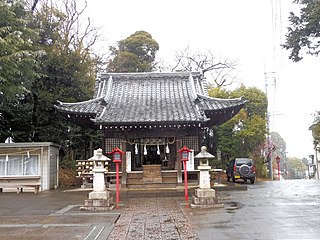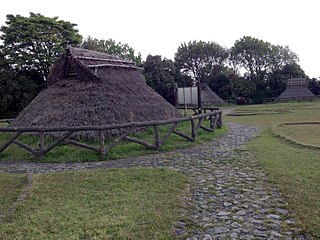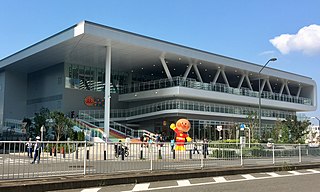87 Sights in Yokohama, Japan (with Map and Images)
Legend
Premium Sights
Book tickets, guided tours and activities in Yokohama.
Guided Free Walking Tours
Book free guided walking tours in Yokohama.
Welcome to your journey through the most beautiful sights in Yokohama, Japan! Whether you want to discover the city's historical treasures or experience its modern highlights, you'll find everything your heart desires here. Be inspired by our selection and plan your unforgettable adventure in Yokohama. Dive into the diversity of this fascinating city and discover everything it has to offer.
Sightseeing Tours in YokohamaActivities in YokohamaThe Yokohama Red Brick Warehouse is a historical building that is used as a complex that includes a shopping mall, banquet hall, and event venues. The complex, officially known as the Newport Pier Bonded Warehouse , was originally used as customs buildings, and has two sections: Warehouse No.1 and No.2. It is operated by Yokohama Akarenga Co. Ltd., and located at the Port of Yokohama in Naka-ku, Yokohama, Kanagawa, Japan.
Hikawa Maru (氷川丸) is a retired Japanese ocean liner that Yokohama Dock Company built for the NYK Line. She was launched on 30 September 1929 and made her maiden voyage from Kobe to Seattle on 13 May 1930. She is permanently berthed as a museum ship at Yamashita Park, Naka-ku, Yokohama.
3. Sojiji Temple
Sōji-ji (總持寺) is one of two daihonzan of the Sōtō school of Zen Buddhism. The other is Eihei-ji temple in Fukui Prefecture. Fodor's calls it "one of the largest and busiest Buddhist institutions in Japan". The temple was founded in 740 as a Shingon Buddhist temple. Keizan, later known as Sōtō's great patriarch Taiso Jōsai Daishi, founded the present temple in 1321, when he renamed it Sōji-ji with the help and patronage of Emperor Go-Daigo. The temple has about twelve buildings in Tsurumi, part of the port city of Yokohama, one designed by the architect Itō Chūta.
4. 東福寺
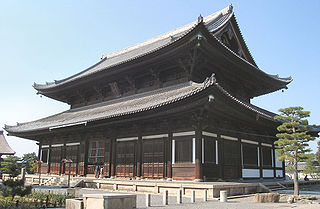
Tōfuku-ji (東福寺) is a Buddhist temple in Higashiyama-ku in Kyoto, Japan. Tōfuku-ji takes its name from two temples in Nara, Tōdai-ji and Kōfuku-ji. It is one of the Kyoto Gozan or "five great Zen temples of Kyoto". Its honorary sangō prefix is Enichi-san (慧日山).
5. Shomyoji Temple
Shomyoji Temple is a temple of the Shingon Ritsu sect located in Kanazawa-cho, Kanazawa-ku, Yokohama, Kanagawa Prefecture. The name of the mountain is Kinzawa. The main Buddha is Maitreya Bodhisattva. Eighty-eight sacred sites in the eastern part of New Shikoku, No. 75.
6. 円海山
Mt. Enkaizan is a mountain at the northern end of the Miura Hills, located in Isogo Ward, Yokohama City, Kanagawa Prefecture. 153.3 meters above sea level. For a long time, it was considered the highest point in Yokohama City, but as a result of surveying, the highest peak was Mt. Daimaru (elevation 156.8 m) and the highest point was the ridge of Mt. Ohira (elevation 159.4 m).
7. 弘明寺
Komyoji Temple is a temple of the Koyasan Shingon sect located in Komeiji-cho, Minami-ku, Yokohama City, Kanagawa Prefecture. It is the oldest temple in Yokohama City. The wooden eleven-sided statue of the Honzon (commonly known as "Komeiji Kannon") is an important cultural property of Japan. The temple name is also widely used in town names and station names, and from the Edo period until 1889 (Meiji 22), the area was called Komeiji Village (later Komeiji Town).
8. K-Arena Yokohama
K Arena Yokohama (K Arena Yokohama) is a music-only arena located in Minato Mirai, Nishi-ku, Yokohama City, Kanagawa Prefecture. It will be operated by K Arena Management, a subsidiary of Ken Corporation. It has a capacity of about 20,000 people. Opening on September 29, 2023.
9. Sea Paradise
Yokohama Hakkeijima Sea Paradise is an amusement park consisting of an aquarium, shopping mall, hotel, marina and amusement rides. It is located in Hakkeijima, Kanazawa-ku, Yokohama, Kanagawa, Japan. It opened for business on May 8, 1993.
10. Christ Church
Christ Church, Yokohama, is a historic Anglican church located in Yamate, Yokohama, Japan. Providing a center of worship for both Japanese and English-language congregations the church traces its foundation to shortly after the formal opening of the treaty port of Yokohama in 1859.
11. Yokohama Tram Museum
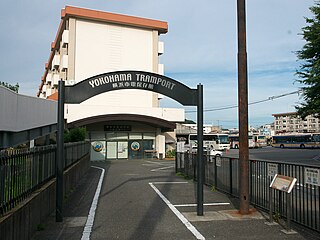
The Yokohama Tram Preservation Museum is located in Takizu 3-chome, Isogo-ku, Yokohama City, Kanagawa Prefecture, and is a facility that preserves and exhibits materials related to the Yokohama City Transportation Bureau's trams (Yokohama streetcars) that were abolished in March 1972 (Showa 47). It is operated by the Yokohama City Transportation Bureau Cooperation Association.
12. Cosmo Clock 21
Cosmo Clock 21 is a 112.5 metre tall ferris wheel at the Cosmo World amusement park in the Minato Mirai 21 district of Yokohama, Japan. When it first opened, it was the world's tallest Ferris wheel, until the completion of the 108-metre (354 ft) Igosu 108 in Shiga, Japan, in 1992.
13. 馬の博物館
The Horse Museum is a museum located within the Negishi Racecourse Memorial Park (Negishi Forest Park) in Naka Ward, Yokohama City, Kanagawa Prefecture, showcasing materials related to horse racing and equestrian culture.
14. Nogeyama zoo
Nogeyama Zoological Gardens is a free zoo opened in April 1951 and located in Nogeyama Park, in Nishi-ku, Yokohama, Japan. It covers 9.6 hectares and houses about 1400 animals of 100 different species. It is open from 9:30 am to 4:00 pm and is closed on Mondays.
15. Naritasan Yokohama Betsuin Enmei- in
Naritasan Yokohama Betsuin Enmeiin is a temple of the Shingon sect of the Chizan sect located in Miyazaki-cho, Nishi-ku, Yokohama, Kanagawa Prefecture. It is a Yokohama Betsuin temple in Naritasan Shinshoji Temple (Narita City, Chiba Prefecture), commonly known as Nogeyama Fudoson, Yokohama Naritasan.
16. Tsurumi Shrine
Tsurumi Shrine is a shrine located in Tsurumi Chuo, Tsurumi Ward, Yokohama City, Kanagawa Prefecture (formerly Tsurumi Village, Tachibana District, Musashi Province). The former company name is Murasha. The crest of the god is Yusokuzuru. It is said to be the oldest shrine between Yokohama and Kawasaki.
17. Yokohama Archives of History
The Yokohama Archives of History in Naka ward, central Yokohama, near Yamashita Park, is a repository for archive materials on Japan and its connection with foreign powers since the arrival of Commodore Matthew Perry in 1853. The archives are next to Kaiko Hiroba where Commodore Perry landed to sign the Convention of Kanagawa.
18. America-yama Park
Mt. Amerikayama Park is located in Yamate-cho, Naka-ku, Yokohama City, Kanagawa Prefecture, and is the first three-dimensional city park in Japan to be developed on the top of the station building of Motomachi-Chinatown Station on the Minato Mirai Line. The park area is about 0.6 hectares.
19. Kanazawa Bunko Museum
Kanazawa Bunko (金沢文庫), formally titled the Kanagawa Prefectural Kanazawa-Bunko Museum, is a museum located in Kanazawa Ward, Yokohama, Japan. It features a collection of traditional Japanese and Chinese art objects, many dating from the Kamakura period.
20. Dockyard Garden
Yokohama Dock is a shipyard that used to be located in Yokohama City. Later, it merged with Mitsubishi Heavy Industries to become Mitsubishi Heavy Industries Yokohama Dock. Later, the name was changed to Mitsubishi Heavy Industries Yokohama Shipyard. Furthermore, in 1983 (Showa 58), the shipyard was relocated to the Honmoku area, renamed Mitsubishi Heavy Industries Yokohama Works, and the site was redeveloped as Yokohama Minato Mirai 21. The two dry docks remain on the site and are designated as important cultural properties of Japan.
21. YOKOHAMA DOLL MUSEUM
Yokohama Doll's House is a museum located in Yamashita-cho 18, Naka-ku, Yokohama, Kanagawa Prefecture. The museum has more than 13,000 dolls and materials related to dolls from 141 countries around the world. It also exhibits dolls from Japan and abroad. The facility is owned by the City of Yokohama and is operated by the Tanseisha-Tokyu Community Consortium as the designated manager.
22. Nogeyama Park
Nogeyama Park is an urban park (comprehensive park) located in Nishi-ku, Yokohama City, Kanagawa Prefecture. It covers an area of about 9.1 hectares and is home to the Nogeyama Zoo, which is famous for its 380 cherry blossom trees. From the park, you can also see the Minato Mirai area.
23. 横浜聖アンデレ教会
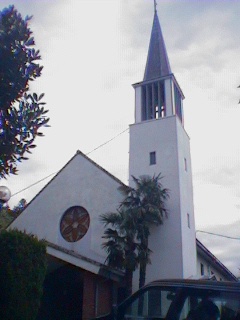
St. Andrew's Cathedral, Yokohama (横浜聖アンデレ教会) is the Cathedral Church of the Yokohama Diocese of the Nippon Sei Ko Kai, the Anglican Church in Japan. The diocese includes all Nippon Sei Ko Kai churches in Chiba, Kanagawa, Shizuoka and Yamanashi prefectures.
24. 神奈川台場跡
Kanagawa Daiba (Kanagawa Daiba) is a daiba located in Kanagawa Ward, Yokohama City, Kanagawa Prefecture, designed by Katsu Kaishu and built by the Iyo Matsuyama Domain at the end of the Edo period. In addition, reclamation work is underway for the construction of condominiums, and discussions are underway between Kanagawa Prefecture, local residents, and historians.
25. Kariba JCT
The Kariba Interchange (Kariba Interchange) is an interchange between National Route 16 Yokohama Shindo and National Route 16 Yokohama Yokosuka Road in Kariba-cho and Gontasaka, Hodogaya-ku, Yokohama City, Kanagawa Prefecture, Japan. Here, the Kariba Junction (Kariba Junction), which connects the aforementioned two lines and the Metropolitan Expressway Kanagawa No. 3 Kariba Line, is also described.
26. Museum of Yokohama Urban History
The Yokohama Urban Development Memorial Museum is a museum in Yokohama City, Kanagawa Prefecture that exhibits the history of the development of Yokohama City. Opened in March 2003. It is located in the same building as the Yokohama Eurasian Culture Museum (4th floor).
27. Konzō-ji Temple
Konzouji is a Tendai sect temple located in Kohoku Ward, Yokohama City, Kanagawa Prefecture. Its official name is Seirinsan Butsurin-in Konzouji. It is also known by the alternative name National Guardian Dojo.
28. Hara Model Railway Museum
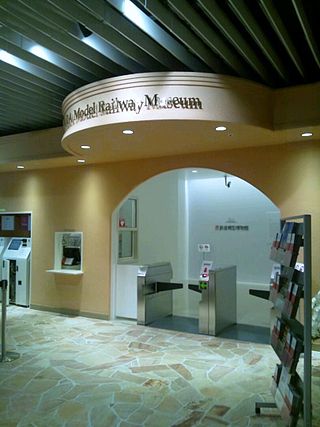
The Hara Model Railway Museum is a model railway museum in Nishi-ku, Yokohama, Japan, which opened on 10 July 2012. Managed by Mitsui Fudosan, the museum houses the extensive collection of model trains built and amassed by the Japanese model railway enthusiast Nobutaro Hara . The museum covers an area of approximately 1,700 m², with the display area covering an area of approximately 1,200 m².
29. Electric Power Historical Museum
The Electric Museum is a science museum (archive) operated by Tokyo Electric Power Company, located in Tsurumi Ward, Yokohama City, Kanagawa Prefecture, that exhibits materials related to electricity.
30. 瀬戸神社
Seto Shrine is a shrine located in Seto, Kanazawa-ku, Yokohama, Kanagawa Prefecture. It is also called Seto Mishima Myojin. The former company name is Gosha. It is now a religious corporation and is a shrine dedicated to the Kanagawa Prefectural Shrine Agency.
31. 稲荷前古墳群
The Inarimae Kofun Group is a group of ancient tombs located in Oba-cho, Aoba Ward, Yokohama City, Kanagawa Prefecture. Various shapes of tombs (keyhole-shaped tombs, round tombs, square tombs, and horizontal stone chambers) are densely packed in a small area, earning it the nickname "Museum of Kofun," but only three remain today. It is designated as a historic site by Kanagawa Prefecture.
32. 杉山神社
Sugiyama Shrine is a shrine located in Kawashima, Hodogaya-ku, Yokohama City, Kanagawa Prefecture. It is the shrine of Kawashima Town, and is considered to be one of the shrines of "Sugiyama Shrine", the only shrine in Yokohama City and the former Musashi Province Shikinai Shrine. It is also called Kawashima Sugiyama Shrine.
33. Shinpukuji Temple
Shinpukuji Temple is a temple of the Shingon sect of the Toyoyama sect located in Aoba-ku, Yokohama City, Kanagawa Prefecture. The 20th temple of the 33 Kannon Sacred Grounds of the former Xiao Desk Territory.
34. Yamate Italiayama Garden
Yamate Italia Mountain Garden is a garden located in the Yamate district of Naka-ku, Yokohama City, Kanagawa Prefecture. It is called Mt. Italy because the Italian consulate was located from 1880 (Meiji 13) to 1886. It is an Italian-style garden with geometric arrangements of waterways and flower beds, and was relocated to Bluff 18 in 1993 and the diplomat's house in 1997. In the flower beds, the Prestige de Lyon, a gift from the sister city of Lyon, blooms during the rose season.
35. SOGO Museum of Art
Sogo Museum of Art is an art museum located on the 6th floor of the Sogo Yokohama store. When Yokohama Sogo (currently Sogo Yokohama store) opened on September 30, 1985 (Showa 60), it opened at the same time. As a museum in a department store, it is the first facility in Japan under the Museum Law. It is operated by the Sogo Museum of Art.
36. Yokohama Shiloh Church
Yokohama Shimji Church (横浜指路Church, Yokohama Sashiji Church) is a church of the Japan Christian Church located at 6-85 Onoe-cho, Naka-ku, Yokohama, Kanagawa Prefecture, Japan. In 1988 (Showa 63), it was certified as a historic building certified by Yokohama City.
37. The Osaragi Jiro Memorial Museum
The Daibutsu Jiro Memorial Museum is a museum dedicated to the writer Daibutsu Jiro, located at 113 Yamate-cho, Naka-ku, Yokohama City, Kanagawa Prefecture. It is situated adjacent to the Hill of Viewing the Port Park. The design was done by Chintaro Urabe.
38. Yokohama Cosmo World
Yokohama Cosmo World is a theme park in Yokohama, Kanagawa Prefecture, Japan. It contains the Cosmo Clock 21, formerly the tallest Ferris wheel in the world. It is since 1999 home to a unique coaster from Senyo Kogyo, named Diving Coaster: Vanish.
39. 神奈川県立地球市民かながわプラザ
Kanagawa Prefectural Global Citizen Kanagawa Plaza is a facility located in Kosugaya, Sakae-ku, Yokohama City, Kanagawa Prefecture, mainly for the purpose of international exchange. His nickname is "Asu Plaza". It was built on the site of the fire academy and opened on February 1, 1998 (Heisei 10). It is located a few minutes' walk from Hongodai Station on the JR Keihin Tohoku Negishi Line, and is also home to the Yokohama City Sakae Ward Cultural Center "Lilith".
40. Taya Caves
Yugado Cave is an artificial cave located in the precincts of the Shingon Buddhist temple of the Daikakuji sect of Tayayama Josenji Temple in Taya-cho, Sakae-ku, Yokohama, Kanagawa Prefecture, Japan. The official name of the cave is Taya Cave, but it is commonly referred to as the "Taya Cave". 瑜伽 is an esoteric term. On November 1, 1990 (Heisei 2), it was registered as a "regional historic site" of Yokohama City Registered Regional Cultural Property.
41. 川和富士公園
Kawawa Fuji Park is a city park (neighborhood park) located in Tsuzuki Ward, Yokohama City, Kanagawa Prefecture. There is Kawawa Fuji, one of the local Fuji originating from Fujizuka, and it has become a symbol of Kawawa Town. The official name under the City Planning Act is No. 13 Park near Kohoku New Town.
42. 神奈川芸術劇場
Kanagawa Prefectural Hall is a general term for a prefectural cultural complex located in Yamashita Town, Naka-ku, Yokohama City, Kanagawa Prefecture. It is a large-scale cultural complex consisting of two buildings, the Kanagawa Kenmin Hall Main Building and the KAAT Kanagawa Arts Theater, boasting a capacity of about 4,600 people in five large and small theaters. It is managed and operated by the Kanagawa Arts Foundation.
43. Choukouzan Myourenji
Myorenji is a Nichiren sect temple located in Kohoku Ward, Yokohama City, Kanagawa Prefecture. It is commonly known as Kikuna Myorenji. The former head temple is the Daihonzan Ikegami Honmonji. It is affiliated with the Ikegami Chudo Fujian Horyu.
44. 市ヶ尾横穴墓群
The Ichigao Yokoko Tombs or Ichigao Yokobo Tombs are a group of burial mounds located in Kao, Aoba-ku, Yokohama, Kanagawa Prefecture, Japan. It is designated as a Kanagawa Prefecture Designated Historic Site.
45. Negishi Racecourse
Negishi Racecourse was a horse-racing facility located on the outskirts of Yamate in the treaty port of Yokohama, recognized as the first purpose built European style racecourse in Japan. The course was operational between 1866 and 1942.
46. 厳島神社
Itsukushima Shrine is a shrine located in Hagoromo-cho 2-chome, Naka-ku, Yokohama City, Kanagawa Prefecture. It is a shrine in Yokohama Village, Kuragi District, Musashi Province, and is currently dedicated to the three goddesses Munakata (Ichikishima Himeson, Takiri Himeson, and Takito Himeson).
47. 上行寺東遺跡
The Jogyoji East Ruins or Jogyoji Higashi Yagura Group Ruins are medieval ruins located in Rokuura, Kanazawa-ku, Yokohama, Kanagawa Prefecture, Japan. There is a theory that it is the predecessor of Ryuka-ji Temple in Suzaki-cho, Kanazawa-ku, and is the site of Jogan-ji Temple, which was founded by Minamoto Yoritomo in Mt. Rokuura during the Bunji period.
48. Yokohama City Hasseiden Local Museum
Yokohama City Hachiseiden Folk Museum is a folklore museum located in 76 Honmoku Motomachi, Naka-ku, Yokohama City, Kanagawa Prefecture. It is managed and operated by the Yokohama City Furusato History Foundation.
49. 妙法寺
Myōhōji is a Nichiren sect temple located in Naze-cho, Totsuka Ward, Yokohama City, Kanagawa Prefecture. Its mountain name is Kyōōzan. The former head temple is Gyokuzō Myōhōkaji. It is affiliated with the Datsushi sect and is designated as a historical site of the Nichiren sect.
50. Mitsubishi Minatomirai Industrial Museum
Mitsubishi Heavy Industries Yokohama Building is a skyscraper located in Minato Mirai, Nishi-ku, Yokohama City, Kanagawa Prefecture. Together with the Marunouchi Futabashi Building in Chiyoda-ku, Tokyo, it functioned as the headquarters of Mitsubishi Heavy Industries.
51. ENGLISH HOUSE NO.1
Eiichibankan was a trading post built in Yokohama in the late Edo period, and was the first branch office of Jardine Matheson & Co. (Yiwa Yoko) to open in Japan. It was built in Yamashita-cho 1, Naka-ku, Yokohama City, Kanagawa Prefecture (former Yamashita-cho Settlement No. 1).
52. NYK Maritime Museum
The NYK Maritime Museum is a museum in Naka-ku, Yokohama, Kanagawa Prefecture, Japan, dedicated to the maritime history of Japan and of the museum's operator, shipping company Nippon Yūsen Kabushiki Kaisha. It was opened in 1993.
53. Yokohama Zoological Gardens
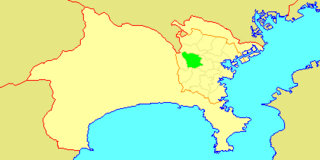
Asahi-ku (旭) is one of the 18 wards of the city of Yokohama in Kanagawa Prefecture, Japan. As of 2010, the ward has an estimated population of 249,045 and a population density of 7,600 persons per km2. The total area is 32.77 km2.
54. Kanagawa Kenmin Hall
Kanagawa Kenmin Hall (神奈川県立県民ホール) is a 2,493-seat performing arts venue located in Yokohama, Japan. The complex opened in 1975. Many international artists have performed at Kanagawa Kenmin Hall, including Linda Ronstadt, King Crimson, Chicago, Cheap Trick, Alanis Morissette, The Black Crowes, The Doobie Brothers, Diana Ross and Paul Rodgers.
55. 浅間神社
Sengen Jinja is a shrine located in Nishi-ku, Yokohama City, Kanagawa Prefecture. It was the town keeper of the former Shiba Village (Shibomura, now Asama Town). It is located on a hill called Sodesuri Mountain, where the burial mounds are densely packed.
56. PIA ARENA MM
Pia Arena MM (ぴあアリーナMM) is a dedicated music arena in Minatomirai, Nishi-ku, Yokohama, Kanagawa Prefecture, Japan, operated by Pia Corporation. Before the official name was decided, it was tentatively called "Pia MM Arena".
57. 冨塚八幡宮
Tomizuka Hachimangu is a shrine located in Totsuka Ward, Yokohama City. The former company name is Gosha. The official website uses the correct character "Tomi", but the variant character "冨" is sometimes used, such as the website of the Kanagawa Prefectural Shrine Agency.
58. Yokohama Port Museum
Yokohama Port Museum , formerly known as Yokohama Maritime Museum is a museum in Yokohama, Kanagawa Prefecture, Japan. It is located are located in the Nippon Maru Memorial Park, which is found in the Minato Mirai 21 District Nishi-ku ward of the central business district.
59. 茅ヶ崎城址公園
Chigasaki Castle Park is a park that preserves and uses the medieval Chigasaki Castle used from the 15th to the 16th centuries, located in Chigasaki Higashi 2-chome, Tsuzuki-ku, Yokohama City, Kanagawa Prefecture.
60. 杉山神社
Sugiyama Shrine is a shrine located on a hill at Tsuzuki -ku, Yokohama -shi, Kanagawa, in the eastern end of Tsuzuki Chuo Park. It is one of the former Chigasaki Village Society, one of the leading shrines of Sugiyama Shrine, the only ceremony shrine in Yokohama City and the former Musashi country.
61. ラヂウム霊泉湧出記念碑
The Radium Reisen Spring Monument (Radium Reisen Yushutsuki Nenhi) is a stone monument erected in March 1933 (Showa 8) to commemorate the discovery of Tsunashima Onsen in Tarumachi, Kohoku-ku, Yokohama City, Kanagawa Prefecture. It is one of the materials that conveys the achievements of Tsunashima as a hot spring town in the past.
62. 杉山神社
Sugiyama Shrine is a shrine located near Center North Station in Tsuzuki Ward, Yokohama City, Kanagawa Prefecture. It is a township shrine in the former Otanamura (Odanamura) and is considered to be one of the leading shrines of "Sugiyama Shrine", the only shrine in Yokohama City and the former Musashi Province Shikinai Shrine. Since it was enshrined in the former Otana Village, it is also called Otana Sugiyama Shrine.
63. 杉田劇場
Yokohama City Isogo Ward Cultural Center Sugita Theater is one of the Yokohama City Residents' Cultural Centers located on the 4th and 5th floors of "Rabisuta Shin Sugita" in Sugita, Isogo Ward, Yokohama City, Kanagawa Prefecture.
64. 能見堂跡
The ruins of Noken-do are the remains of a Jizo hall located on a mountain in Noken-dai Mori, Kanazawa Ward, Yokohama City, Kanagawa Prefecture. It has long been cherished as a scenic spot, and the view from here, which was praised in Chinese poetry by the Ming monk Shin'etsu Zenji, is said to be the origin of the "Kanazawa Eight Views," and it also became the origin of the modern town name Noken-dai. It is registered as a "local historic site" by Yokohama City.
65. 妙福寺
Myofukuji is a Nichiren sect temple located in Nishitani, Hodogaya Ward, Yokohama City, Kanagawa Prefecture. The mountain name is Hoshikawa-san. The founder is Nichii of Zuizen-in, and the founder of the temple is Nichikai of Choshoin. The former head temple is Atsugi Myojunji.
66. 横穴墓
The Miyano-mae horizontal cave tomb group is an ancient horizontal cave tomb site located in Kajiya-cho 2-27, Sakae Ward, Yokohama City, Kanagawa Prefecture, within the Kajiya Citizens' Forest. It is one of the approximately 20 groups and 200 tombs that once existed along the Shikagawa River.
67. Shirahataike Park
Shirahataike Park is a park located in Shirahata, Kanagawa-ku, Yokohama, Kanagawa Prefecture, Japan. It is adjacent to Kanagawa Prefectural Shinohara Park (35.491311°N 139.626230°E). There is playground equipment. Fishing is possible at Shirahata Pond in the park. It has been selected by Kanagawa Ward, Yokohama City as one of the "50 best places in our town Kanagawa" as a familiar place and favorite place for citizens.
68. 唱導寺
Shodoji Temple is a Nichiren Buddhist temple located in Hino Chuo 1-chome, Konan Ward, Yokohama City, Kanagawa Prefecture, Japan. The name of the mountain is Yanbao Mountain. Konishi Horen. It is known as the Bodhi Temple of the singer Hibari Misora (Jichoin Misora Hiwakiyo Dai Elder Sister).
69. 山田富士
Yamada Fuji is a Fuji mound from the Edo period located at 1-4 Kitayamada, Tsuzuki Ward, Yokohama City, Kanagawa Prefecture. It is situated in Yamada Fuji Park, south of the Yokohama International Pool. It was registered as a "local historic site" in the Yokohama City registered regional cultural properties on November 5, 1996.
70. Kantei-byo
Yokohama Kantei Temple is a temple located in Yokohama Chinatown in Naka-ku, Yokohama City, Kanagawa Prefecture. It is dedicated to Emperor Guan (deified Guan Yu) and is revered mainly as the guardian god of merchants.
71. Home of a Diplomat
The Diplomat's House, or the former Uchida Family Residence, is a two-story wooden Western-style building with a tower built in 1910 (Meiji 43). It was built in Shibuya-ku, Tokyo, as a residence for Uchida Sadatsuchi, a diplomat of the Meiji and Taisho eras, but is now located in Yamate-cho, Naka-ku, Yokohama City, Kanagawa Prefecture. Under the name of "Former Uchida Family Residence", it was designated as an important cultural property of the country in 1997 (Heisei 9).
72. Shōbodaiji Temple
Shobodo -ji is a temple located in Kamigo -cho, Yokohama -shi, Kanagawa. Shingon sect. It is reported that Gen Yoritomo has been erected, and there are many collections designated as a cultural property.
73. 横浜市三殿台考古館
The Yokohama City Sandondai Archaeological Museum is an archaeological museum located in Okamura, Isogo-ku, Yokohama City, Kanagawa Prefecture. Relics and remains excavated from the national historic site Sandondai will be preserved and exhibited, and the history of ancient Yokohama will be introduced.
74. 松蔭寺
Shoinji Temple is a temple of the Kenchoji sect of the Rinzai sect located in Yokohama City, Kanagawa Prefecture. The name of the mountain is Mt. Senzuru, and the main statue is a wooden statue of Shakyamuni.
75. Former Fuji Bank Yokohama Branch
The former Fuji Bank Yokohama Branch is a building located in Honmachi 4-chome, Naka-ku, Yokohama City, Kanagawa Prefecture. Completed in 1929 (Showa 4), it was used as a branch of Fuji Bank until 2001, and since 2005 it has been used as a school building of the Tokyo University of the Arts Graduate School.
76. 川和富士
Kawawa Fuji (Kawawa Fuji, Kawawa Fujizuka) is a Fujizuka of the late Edo and Meiji periods that once existed at the Kawawa Fujizuka ruins near Fujimigaoka 18, Tsuzuki-ku, Yokohama City, Kanagawa Prefecture (formerly Kawawa-cho 2037 and 2038) as one of the Kohoku New Town ruins. Kawawa Fuji, which is currently located in Kawawa Fuji Park (Fujimi Gaoka 20, Tsuzuki-ku), is a local Fuji that was newly built about 200 meters southeast of its original location.
77. 赤田2号墳
The Akada No. 2 Tomb is one of the ancient tombs that made up the Akada Tomb Group, which once existed in Azamino Minami, Aoba Ward, Yokohama City, Kanagawa Prefecture (formerly Akada, Eda Town, Midori Ward). A life-sized replica is installed in Akada Nishi Park near Eda Station on the Tokyu Den-en-toshi Line (3-1-1 Azamino Minami).
78. 三井住友銀行横浜支店
Sumitomo Mitsui Banking Corporation Yokohama Branch is a building located in Honmachi 4-chome, Naka-ku, Yokohama City, Kanagawa Prefecture. It was completed in 1931 (Showa 6). With the promotion of the Yokohama Honmachi 2-chome project (tentative name), reconstruction is planned. The branch code is 588.
79. Bokkado Ancient Ruins
The North Gate Tombs are a group of burial mounds from the late 6th to 7th centuries located in Tokaichimachi, Midori-ku, Yokohama, Kanagawa Prefecture. It is the southernmost of the burial mounds using Haniwa produced at the site of the Haniwa kiln in Konosu City, Saitama Prefecture, along with the Yamakura Kofun Group at Kokubunjidai, Ichihara City, Chiba Prefecture.
80. Shosenzka Shell Mound
The Kosenzuka Shell Mound is a shell mound of the late Jomon period located at 6-chome, Shimosueyoshi, Tsurumi-ku, Yokohama, Kanagawa Prefecture, Japan. The area of the ruins corresponds to the current Kanagawa Prefectural Tsurumi High School.
81. Former Tokyo Mitsubishi Bank Yokohama Chuo Branch
The former Bank of Tokyo-Mitsubishi Yokohama Central Branch is a bank building completed in 1934 located in Naka-ku, Yokohama City, Kanagawa Prefecture. In 2004, it was converted into a high-rise condominium building that retains the appearance of a bank in the lower floors.
82. 兜塚
Kabutozuka Kofun is an ancient burial mound of the late Kofun period located in Tsurumi Ward, Yokohama City, Kanagawa Prefecture. The mound is circular in shape, but the destruction and leveling of the mound is remarkable. It is said to have constituted the Kajiyama burial mounds. The burial mound was built in the 6th century, but there is a tradition related to the 15th century (Muromachi period) warlord Ota Michina.
83. 掃部山公園
Kamonyama Park is a park in Nishi-ku, Yokohama City, Kanagawa Prefecture, Japan. Located on a hill overlooking Minato Mirai 21, a statue of Naosuke Li, who played key role in the opening of Yokohama Port in 1859, stands in the park. the park is also a popular destination for cherry blossoms during spring.
84. Otsuka relics
The Ōtsuka-Saikachido Site is an archaeological site located in the Nakagawa neighborhood of Tsuzuki-ku, Yokohama, Kanagawa Prefecture, in the southern Kantō region of Japan. The site contains traces of a Yayoi period settlement trace and was designated a National Historic Site in 1986.
85. 高田天満宮
Tenmangu is a shrine located in Kohoku Ward, Yokohama City, Kanagawa Prefecture. It is the guardian shrine of the former Takada Village in Tsuzuki District and is commonly known as Takada Tenmangu. Its former status was that of a village shrine.
86. 三殿台遺跡
The Santonodai site is an archaeological park with the ruins of a large-scale Yayoi period settlement, located in the Okamura neighborhood of Isogo-ku, Yokohama, Kanagawa Prefecture in the southern Kantō region of Japan. It was designated a National Historic Site of Japan in 1966.
87. Yokohama Anpanman Children's Museum & Mall
The Yokohama Anpanman Children's Museum (Yokohama Anpanman Children's Museum) is a complex of participatory museums and shopping malls with the theme of "Anpanman" located in Minato Mirai, Nishi-ku, Yokohama City, Kanagawa Prefecture.
Share
How likely are you to recommend us?
Disclaimer Please be aware of your surroundings and do not enter private property. We are not liable for any damages that occur during the tours.
